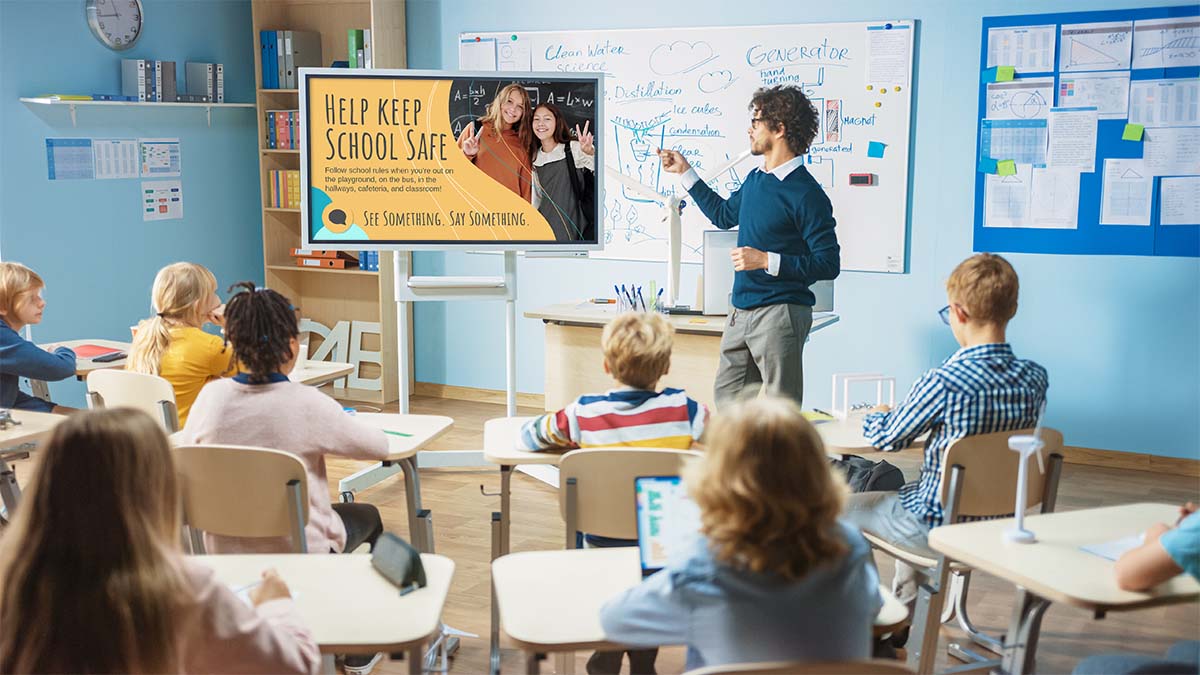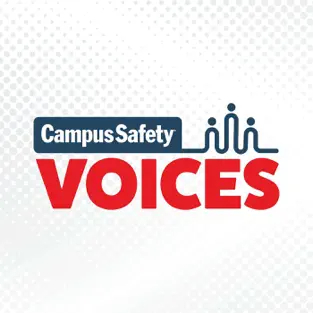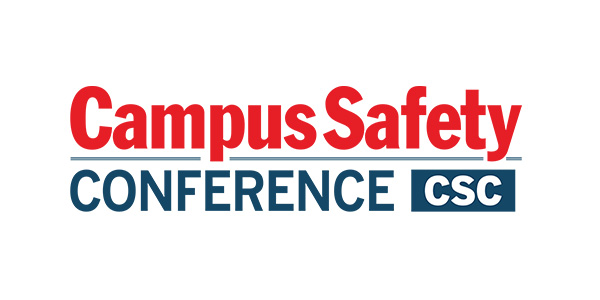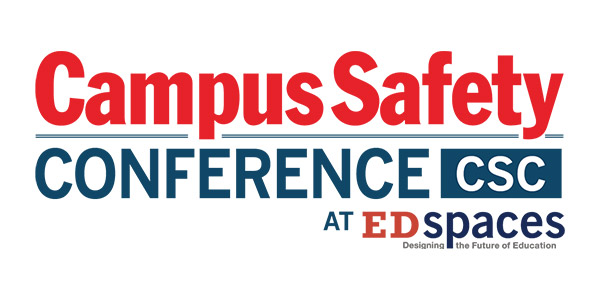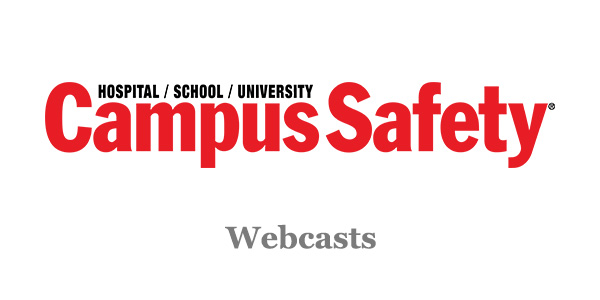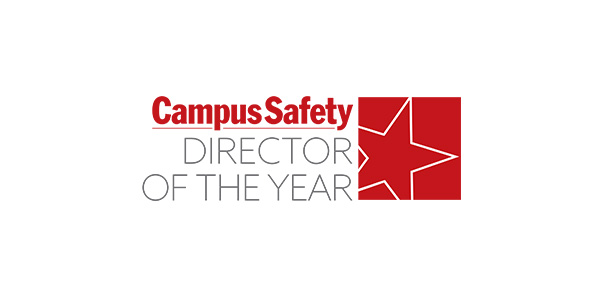Amy Rock (0:00): Hi, everyone, and welcome to this episode of the Campus Safety Voices podcast. My name is Amy Rock, I’m Campus Safety’s executive editor and today’s episode will be about emergency messaging. Joining me today to shed more light on the topic and also offer insights on solutions is Eric Henry, senior vice president of business architecture at Carousel Signage.
Before we jump into the conversation, Eric, can you just give a quick overview of what Carousel does, so we have some context for the conversation?
Eric Henry (0:29): Yeah, absolutely. We make campus messaging software for digital signs and personal devices for campuses of all sizes, so that’s really what we do.
Amy Rock (0:38): Alright, awesome. And now Carousel, I’m sure, speaks to customers or potential customers on a daily basis. In these discussions, what are some challenges campuses say they are facing today when it comes to emergency messaging, specifically on educational campuses?
Eric Henry (0:54): Yeah, absolutely. I think the core of the challenges, and I know it’s been our challenge for over 25 years, is how do you even start talking about it? It’s not a particularly fun topic. It’s obviously one that is very important to a lot of organizations, and so I think the core of the challenge is, first of all, how do we talk about it?
And then, if you follow up with that, you get into most of the conversation is around physical security itself, and buttons and alarms and all of those things. It’s not very human. It’s very mechanical. And so I think that’s a big part of the challenge is, okay, there’s a lot to it. It’s sort of an overwhelming topic. ‘Where do I get started?’ I think, is really a part of it. Once you get started, and maybe have a little bit of a framework for having the conversation, or even how to think about it as a school district or a higher ed campus or those types of things, then I think the conversation gets a little bit easier and you see that actually there are some things out there and some people that are working together to help solve this problem for people. But I would say that that's the core challenge is just how do I get started? And okay, we've got this and we've got that. They seem a little disconnected. How do we put our thinking around it?
And so hopefully, in the next few minutes here, we can just share a few things that will help people step in and maybe navigate the conversation a bit.
Amy Rock (2:17): Absolutely. And now, when it comes to protecting all types of campuses, we know safety and security is very layered. It's not one single tool is going to solve emergency communications on its own. So how does Carousel support and strengthen a multichannel alert strategy?
Eric Henry (2:33): Yeah, excellent question. And so piggybacking off of the first part, what we really noticed and we started digging into that several years ago was, okay, as we talked to educators, the K-12 teachers, administrators, higher ed people, what were the questions and things they were having? One of the things that actually layered in with emergency messaging and has informed this whole conversation is actually student wellness.
And so what we saw out of COVID when people were coming back to schools, a lot of students were experiencing higher levels of anxiety and discomfort in those types of environments, but that really informed actually our emergency notification and messaging strategy. So what happened was we started digging in and interviewing and trying to understand more of the problem, and real quickly what we landed on and started to see more clearly was there's actually four phases of emergency messaging and emergency management.
And so when we think about prevention, that really, for us, a lot of times the wellness and those types of things fall in, what are we doing around prevention of things? So, educating students and faculty and those types of things.
How are we preparing, which is the second piece, students and faculty for emergency events and those types of things? So again, around education. How do we prepare for a fire drill? Where do we go? Those types of things. And then the actual response itself. And so I think what happens very often is we think about the response itself when we haven't really thought about the prevention and the preparation pieces of it. And then there's this reunification or recovery aspect, which is the fourth pillar.
The reason I share those four things is once we started framing up the conversation in that way, it started to give us some clarity around, okay, what's the role Carousel specifically plays within preparing, preventing, and responding, and then actually helping with recovery? And then who are all the other partners?
Well, it turns out there are a lot of organizations trying to come at this problems with different strengths. And so that's what we've done is say, "Okay, Carousel is really good at putting messages on screens." We've heard from a lot of educators that they need the ability to have nice templates or even thinking around what are the messages and some of those types of things. So we've done some legwork and said, "Hey, anybody who needs this, please use it." It doesn't matter if you're a Carousel customer or not. If you're an educator and you need some help with content around wellness or emergency preparedness, we'll be happy to share it with you. And then there's this whole ecosystem of other partners in the industry that we've connected with and worked with to understand the strengths that they bring to the conversation.
And so I would say that that's really how we've seen it, and we're very excited to work with other people who are gifted at other parts of the equation. So for example, reunification and recovery. There are whole tools that do awesome jobs of reporting, checking in against student information systems. There's a whole topic around that that we would love to connect people with as well.
Amy Rock (5:42): It's huge to acknowledge that a solutions provider, they can't be experts on everything.
Eric Henry (5:50): Right.
Amy Rock (5:51): So pulling in third-party alerting systems or other partners is key, working together. And I think the last, especially five years, that's become more commonplace and a necessity. People are less... You need to pay attention to profit and things like that obviously if you're a for-profit company, but people are more realizing the importance of just showing that you care about people's safety versus just the dollar amount.
Eric Henry (6:22): Yeah. As an organization, we fundamentally believe that people over profits is a super important thing. And so if we believe that, we have to say, "Okay, we actually want to solve a problem here. This cannot be a thing." And even back to the first point that I made around having the conversation, we have not talked about this functionality in our software for a long, long time for fear that we would sell on fear, and we don't want to do that. We want to just be part of a solution.
And so why we're excited in this particular season of time is that there are a lot of people that are saying, "Okay, we need to get together and solve this for our schools and give our educators the tools they need." The financial part will take care of itself. We don't need a lot here. And so that's really our heart for it is how can we be part of this and bringing people together and helping give educators... They got 74 other challenges within their schools, right? Can we relieve a little bit of the burden on this one? We would love to be part of that. And I'm thankful that there's a lot of other organizations that are sharing that same heart for our schools.
Amy Rock (7:33):And now we also know emergency communication, like I said, is nuanced, but how does Carousel make emergency communication simpler or more effective for campuses?
Eric Henry (7:43): So, I think there's multiple pieces of that. One of them certainly is working with lots of other people. Many organizations have already made a decision on a common alerting protocol system. So whether they're using another provider already or not, as many of them as we can support helps organizations so they can just plug and play.
So certainly, there's this technical component to the functionality of our software, but much more than that, the wraparound is what are all the templates and things that are already created for schools to just plug and play? What are some of the content pieces we can provide, as I mentioned earlier, that just help schools say, "Okay, this is the campaign I want to run. Oh, here's some pre-made content. Here's some Canva templates," or those types of things? And just make it, again, this is the third or fourth job of many people other than maybe the emergency response team within a school district.
And so providing all of the content resources and then also some of the thought leadership. And so white papers and different things that say, "Hey, think about this is how you would prepare for a drill," or, "here's what would happen in a particular maintenance-type issue." Because a lot of these things, we think about the worst case with emergency notifications and messaging, but a lot of it is just in the life of the school. And so, "Hey, the bathrooms in this particular part of the building are not functional right now, reroute." Or air quality, right now we have that going on in Minnesota here, "Hey, no recess today. Okay, what can we do to help inform students or provide content for them even as they're indoor for recess?" or those types of things.
So I think that's a big part of it is providing some thought leadership for organizations to just get their heads around it and give them an ordered way to go through and step into their emergency preparedness planning and, okay, how are we, again, back to the four pieces, how are we going to prevent, what are some of the educational things on a higher ed campus? Educating students around after hours, walking to your car and the resources that are available for that, those types of things, or just other ideas for schools to then take and implement for themselves and make their own.
So, that's a lot of what we think about. Obviously, there's the technical things within working with all the partners and making sure that stuff all works technically so that it's not something they have to think about, but more of the work really is around what is our content strategy, what are we wanting to communicate with our student body and our faculty, and what are the resources in order to do that? So that, I would say, is the bulk of how we try to wrap around and support educators.
Amy Rock (10:21): One of the critical points you made is you want technology to be familiar and used on a regular basis by an end user versus only during an emergency. You don't want the first time or one of the first times they're using the system to be during a serious emergency. So you need to get them used to using the system and what to expect from it, which is why it's great that it's also used for non-emergency situations.
Eric Henry (10:45): Correct. Correct, yeah.
Amy Rock (10:48): Now, as anyone working in this field knows all too well, technology and also leading practices for emergency response move at an absolutely rapid pace. Where do you see emergency messaging going next and how is Carousel able to stay ahead of the curve on that?
Eric Henry (11:04): I think that there's a big opportunity, and I think the progression will be continually more-tailored messaging. And so there's a lot of things happening in our schools that don't necessarily need the entire student body or faculty alerted. There can be simple things within a particular classroom or a hallway or those types of things where you don't really want to disrupt the flow and the lifeblood of the school and the culture. And there are emotional behavioral, especially in K-12 in elementary in particular, where we want to be more and more mindful of a teacher being able to alert administration in a subtle way or communicate in ways.
And so it's not the traditional on-wall signs that we think about for emergency messaging, but even on personal devices, a staff-issued laptop or a personal device like a phone or a tablet, I think there's going to be a lot more of the opportunity for us to be really targeted and discreet about some of the messaging and notifications that we do when it's appropriate.
And so for this type of incident in the classroom where I need administration's attention type of emergency notification, versus this type of all school or a building or those types of things, I think there's just going to be a lot more of all of us really tailoring the messaging, and even things like when we talk about where do students go and those types of things, with the emergence of AI and all the ability to customize things in really cool ways, really be specific and prescriptive about what we're communicating, what people need to know in that moment, almost in real time.
And so I think there's more and more opportunity for that, and as well as just the general connectivity of all of the things from fire alarm systems to audio alerts to visual notifications. And I would say near and dear to our heart in particular is leaning much more into accessibility. So we do have schools for the deaf and other organizations that we have to be mindful of as well when we talk about emergency messaging where not everyone has the same access to the information, whether it be audibly or visually or otherwise.
And so I think there's just a lot of opportunities for this to keep gelling and evolving into a mature solution. I don't think we're quite there yet. There's a lot of people doing good things and it's kind of connected, but I think there's an opportunity for it to mature and become really robust.
Amy Rock (13:45): And just to wrap up the conversation, for people who want to learn more about Carousel, where should they go? Who should they reach out to? What can they do next?
Eric Henry (13:54): Yeah. I think a great start is simply going to carouselsignage.com and we have a whole section that talks about emergency messaging, a lot of our partners. I would say just reach out to our team and we'd love to... It's not a one-size-fits-all thing. Certainly, it starts with a conversation, so we'd love to have a conversation understanding where you're at in the emergency messaging journey. If you're just getting started or you're three-fourths of the way down the road and you just need a little bit of clarification or you just need some content, we would love for you to reach out to us and let's just have a conversation about where you're at.
We have lots of resources. We have booklets, we have templates, we have some thought leadership pieces that we would love to just share with organizations and start the conversation and then go from there. So, carouselsignage.com is probably the easiest way to do that.

